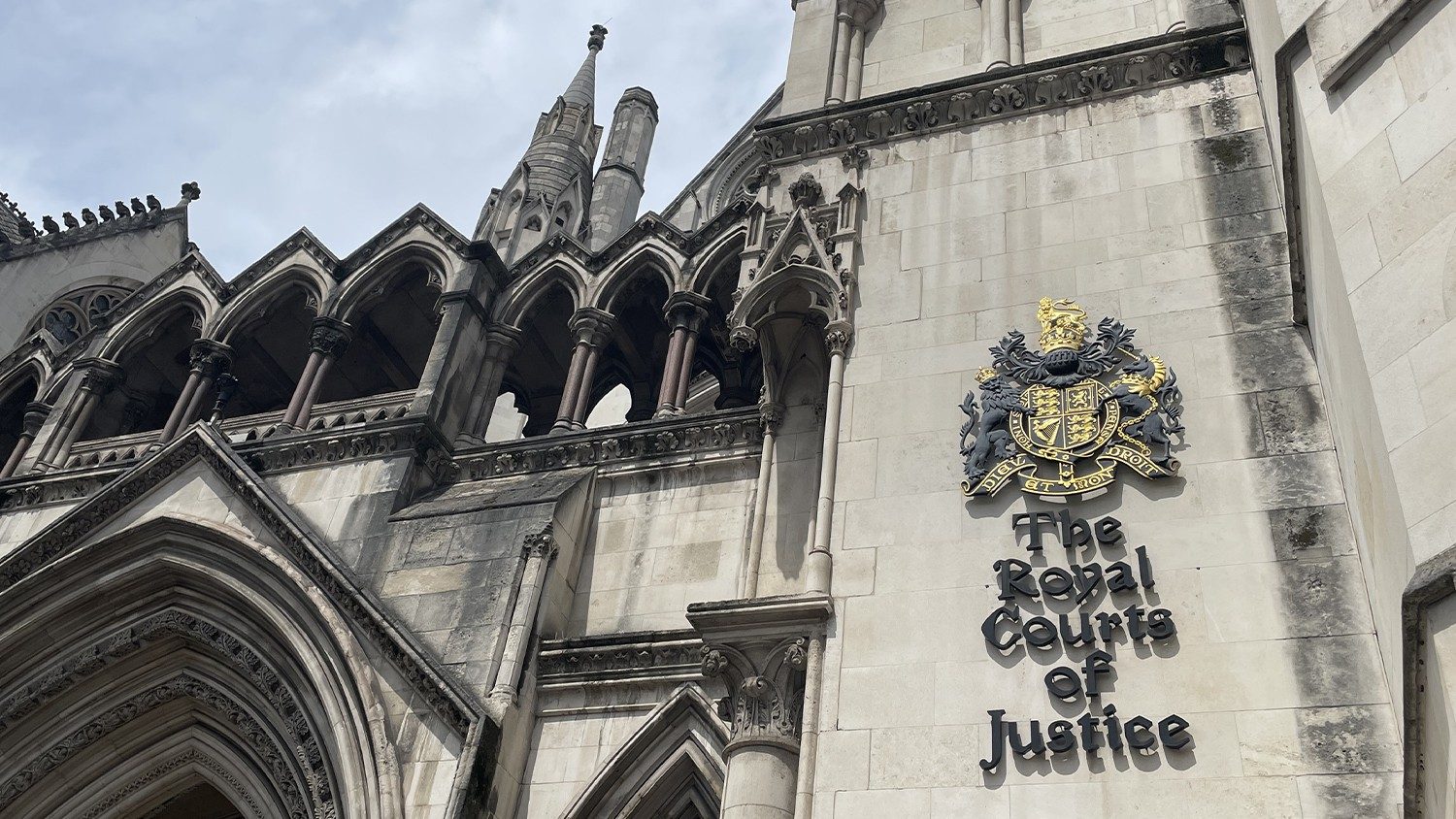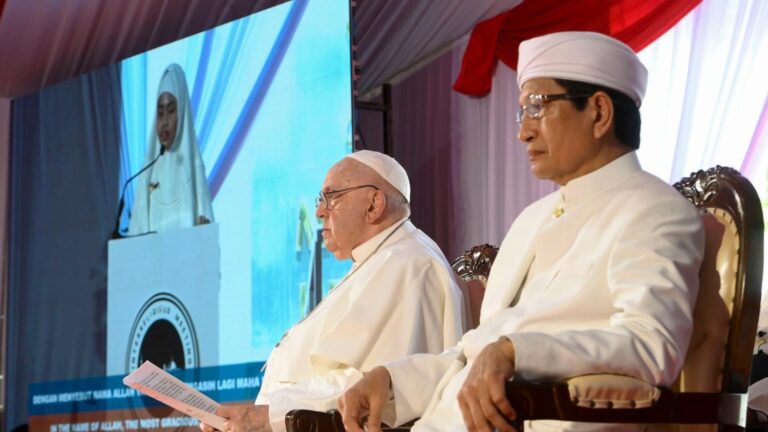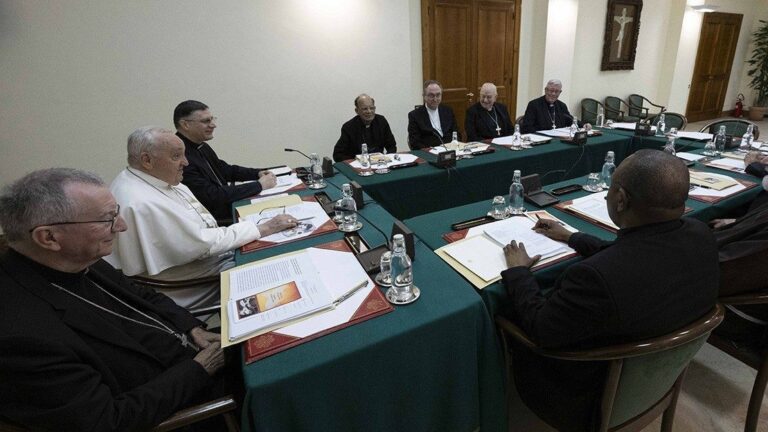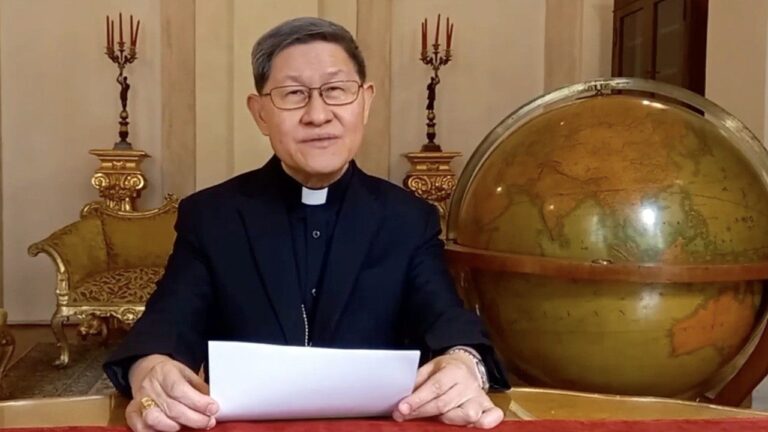Peña Parra: Holy See a victim of fraud
The final part of the evidence of the Deputy Secretary of State before the Royal Courts of Justice in the ongoing civil case concerning the purchase of the Sloane Avenue property.
Salvatore Cernuzio – London
The Holy See was “the victim of serious fraud” in the purchase of the London property.
Monsignor Edgar Peña Parra, substitute for the Secretariat of State, reiterated this point three times during his third and final interrogation at the Royal Courts of Justice in London.
The hearing was part of the ongoing civil trial over the Sloane Avenue property, which is scheduled to continue until July 18.
The hearing was marked by a more tense atmosphere than previous ones, with sometimes heated exchanges, notably on the part of Charles Samek, the lawyer defending financier Raffaele Mincione.
Mincione, convicted in the first instance by the Vatican Tribunal in December 2023, initiated this procedure four years ago to demonstrate his “good faith” in negotiations with the Secretariat of State.
Accusations
Mincione's name did not appear until an hour and a half into the session.
As in the hearings of July 5 and 6, the transactions with the agent Gianluigi Torzi, in particular the payment of 15 million euros by the Holy See to regain control of a property, dominated Samek's questions.
At the end of the audience, Samek listed 20 proposals contrary to the positions of the Holy See, which Peña Parra vehemently denied.
One of the accusations was that Peña Parra had provided the Pope with partial and inconsistent information in a note that referred, among other things, to the London affair.
The Memorandum to the Pope
A document produced at the start of the hearing by the Holy See's defence lawyer, Samar Abbas Kazmi, contradicted this claim.
It is a “note” dated May 2, 2019, in which Peña Parra, who had taken up his new position seven months earlier, explained to the pope the whole London affair. This included the payment to Torzi, certified by invoices indicating services that were not actually rendered after Torzi exerted pressure.
Torzi had threatened to resell the building, as evidenced by a “brochure” received by the Secretariat of State a week before the final stage of the transaction, openly stating that the building was intended for sale.
Omissions and lies
“Mr. Torzi wanted to do only what he wanted,” Peña Parra said.
He leveraged his control through a share purchase agreement signed in his London office in November 2018, in the presence of two officials from the Department of State.
This agreement was signed “without authorization” by the head of the Administrative Office at the time, Monsignor Alberto Perlasca, and ratified by Peña Parra on the basis of the assurances of Nicola Squillace, presented as “our lawyer” (also convicted in the first instance).
“He sent me a monument of lies,” Peña Parra said.
Torzi, after sending a false invoice for supposed property management services, had little contact with the Holy See. Peña Parra pointed out that Torzi had behaved in a similar manner before, recalling an incident in his office where Torzi had removed Fabrizio Tirabassi, a former official of the Administrative Office (also convicted), from the board of directors of the Gutt fund.
Negotiations with Torzi
Samek claimed that there was an agreement with Torzi.
“Months were spent negotiating with someone suspected of fraud,” he said, referring to the 15 million euros paid to Torzi when only 1 or 2 million euros had initially been considered to cut ties with the broker.
According to Samek, the November 2018 framework agreement in London had ended all relations with Mincione and his companies.
He asked where the alleged “conspiracy” between Torzi and Mincione lay, pointing out that Mincione's wife continued to use an office in the building managed by Torzi without paying rent.
Interview with Monsignor Carlino
Samek projected and read aloud the WhatsApp conversations between Torzi and Monsignor Mauro Carlino, then secretary of the Substitute and the only one acquitted among the ten accused in the Vatican trial.
Samek claimed that these messages showed that Carlino was in contact with Torzi about creating a fake invoice.
Peña Parra disagreed, saying Torzi's persistent responses demonstrated what Vatican judges called “extortion.” Torzi intended to list false activities because he had done nothing for the Holy See.
Broker Activities
“I don’t agree with all of this. This is your version,” Peña Parra said. “We rejected this invoice and the activities that Torzi claimed to have done for us, which is why I made it clear to my team that my letter was not an invoice. I did not lie.”
He stressed that his instruction to Credit Suisse for a transfer of 5 million euros constituted a “full and final settlement of all our contractual obligations”.
However, attachments to the email to Credit Suisse mentioned other reasons, including services provided by Torzi for properties in other cities.
The role of the replacement
“I am of course responsible for what I have done, but I have a team” in charge of distributing the documents previously discussed and approved, explained Peña Parra, with a hint of irony: “Yes, usually I am the one who sends the faxes.”
He stressed the importance of his role and its demands, answering Samek's questions that neglected the functioning of the Vatican.
“I am not responsible for the administrative office and all the documents. I have important responsibilities.”
Questions and answers
In a system different from the Italian one, with questions based on dates, numbers and documents immediately displayed on computers, Peña Parra often began his answers with context.
“This is not the time to make speeches…” Samek interrupted, accusing him of looking away from the questions.
Judge Robin Knowles also asked Samek to ask shorter, more focused questions and not to dwell on points already raised or unknown to the witness, such as the €200 million paid to Mincione's Luxembourg Sicav in 2014. “I was not in the Vatican,” the deputy replied laconically. “I was living a happy life in Mozambique.”






